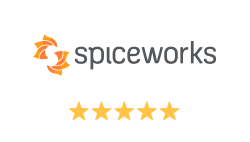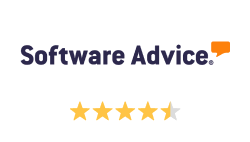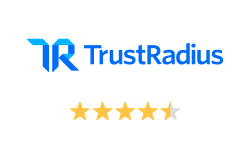TL;DR:
Windows devices must be up-to-date because this is critical for preventing cyberattacks. This guide explains how to install Windows updates remotely across your endpoints using:
✅ WSUS – Centralized update control for domain-joined devices
✅ PowerShell – Flexible scripting with PSWindowsUpdate for hybrid or unmanaged endpoints
✅ Group Policy – Automates update schedules for Active Directory environments
✅ Action1 – Cloud-native patch management with real-time vulnerability assessment and compliance reporting
Keeping your systems up-to-date with the latest security updates is absolutely essential to keep cybercriminals out—especially those constantly looking to exploit unpatched Windows vulnerabilities. Their endgame? Breaking your organization’s security posture to launch ransomware or malware attacks that cause catastrophic consequences for both your business and your clients.
In 2024, we’ve observed a very troubling trend: exploited vulnerabilities—those actively used by attackers in real-world campaigns—have spiked by 82% in Windows 10/11, rising to 31 confirmed cases. Windows Server 2016 has also seen a 33% increase in targeting, climbing to 24 exploited vulnerabilities. This clearly shows a growing interest from threat actors.
Yes, there’s been a slight drop in the total number of critical vulnerabilities disclosed for Windows 10/11 (374 in 2024 vs. 388 in 2023) and for Windows Server 2016 (382 vs. 414), but that doesn’t mean we can breathe easy. The risks are still too high, and the attacks far too damaging, to ignore.
This data reinforces one critical point: keeping your Windows systems patched on time is non-negotiable. Updates fix exploitable flaws, harden your overall security posture, and eliminate the shortcuts cybercriminals depend on to access your endpoints.
In this article, we’ll break down how to install Windows updates remotely across your on-premises and remote machines using tools like WSUS, PowerShell, Group Policy, and trusted third-party patching solutions like Action1.
We’ll explain why these updates are critical, share the best practices for managing them, and dive into how Action1 can help you remediate vulnerabilities at scale—keeping your systems secure and your business one step ahead of the cyberattacks.
Ready? Let’s get started.
Why Install Windows Updates Remotely in the First Place?
When you or your IT team install Windows updates remotely, you are doing more than just deploying security patches and remediating software vulnerabilities. You are reducing downtime, improving your company’s security posture, and, most importantly, streamlining update management across on-premises and remote endpoints without needing physical access to the machines.
We all know how exhausting and overwhelming the process is to install updates manually to a large number of endpoints, and frequently this leaves critical security gaps in your network. Even a single unpatched OS or third-party application can become a reason for a successful cyberattack that brings with it financial losses, damaged reputation, data leaks, downtime, and regulatory fines.
Nowadays, most companies rely on a remote workforce, which makes patching those devices in a short period of time mission impossible for IT teams without having a reliable and efficient third-party patch management tool or expertise in PowerShell, WSUS, or command prompt. Whether you choose to master these traditional tools or opt for more user-friendly alternatives, there are several proven approaches to tackle this challenge effectively.
How to Install Windows Updates on Remote Machines in Different Ways?
Imagine it’s patch Tuesday, and your IT team is already overwhelmed with countless tasks and upcoming deadlines. You’ve got endpoints scattered across different locations, users, clients or employees ignoring update attempts, and systems vulnerable to the latest zero-day exploits. You know the patch is out, but getting it installed across every remote machine in a timely manner is always easier said than done.
Fortunately, you’ve got options to choose from that work best for your company’s needs and requirements. Below we will discuss four proven methods that let you install Windows updates on remote machines without wasting multiple hours chasing down endpoints or disrupting productivity.
How to Install Windows Updates Remotely Using Windows Server Update Services (WSUS)?
WSUS is a great option if your company runs a larger network with domain-joined computers. It gives you centralized control over which updates will be approved, when they are going to be deployed, and how they behave once installed.
With WSUS, instead of each system downloading updates from Microsoft individually, the software pulls them down once and shares them internally. This reduces bandwidth consumption and gives you full control over the patch lifecycle.
WSUS is perfect for environments where compliance and scheduling are just as important as the updates themselves. With it, you have the flexibility to decide which specific patches will be deployed to all of your endpoints or just a particular group, and most importantly, when they will be installed to avoid any operational disruptions. Plus, you can easily generate compliance reports to verify every computer is secured, compliant and up-to-date.
How to Install Windows Updates Remotely Using PowerShell Scripts?
If you need a more flexible option, PowerShell lets you install updates remotely using specific commands from the PSWindowsUpdate module. Keep in mind that you need to install this module separately, as Windows does not include it by default.
Being honest, countless IT specialists prefer this PowerShell module-based approach and see it as a lifesaver when managing hundreds or thousands of remote devices that are not domain-joined or when you need more direct, precise, script-driven control over the update process.
However, there’s a catch: you must activate WinRM (Windows Remote Management) and confirm that the necessary permissions are in place. This means configuring your network to allow remote PowerShell connections and ensuring your computers trust each other.
Once that is done, though, you can automate everything: check for available updates, deploy them, and choose whether you want to reboot the updated machines if necessary. This method is preferred by IT teams working in hybrid environments where endpoints might not always be online or centrally managed.
How to Install Windows Updates Remotely Using Group Policy Settings?
If you’re already using Active Directory, Group Policy is the easiest way to automate Windows updates across your network. For domain-joined computers, you can configure update schedules, enable auto-reboot options, and set how and when updates are downloaded and installed.
Indeed, this is a great way to ensure your remote computers stay current—even when users or your employees are unaware of what’s going on in the background.
Group Policy gives you a reliable, low-maintenance way to automate update deployment across multiple machines with minimal effort. You can combine it with WSUS to control update flow while automating rollout behavior.
How to Install Windows Updates Remotely Using Action1?
Without any doubt, Action1 gives you full control over installing Windows updates remotely on multiple computers. The software equips you with everything needed to keep your endpoints up-to-date—automating every step of the update process with just a few clicks.
Action1 is a cloud-native autonomous endpoint management solution that provides organizations of all sizes with essential features to strengthen their security posture and reduce the attack surface. Once installed—which takes no more than five minutes—the platform immediately performs real-time vulnerability assessments across your operating systems and installed software.
It then prioritizes those vulnerabilities based on CVSS score, severity, and business impact. Once you’ve got the full picture of vulnerabilities across your devices, it’s time to automate the patching. The platform lets you schedule test deployments using its update rings feature, ensuring only stable patches reach your business-critical endpoints.
Just keep in mind—Action1 requires installing its lightweight agent on each endpoint to gather update status and device-specific data. You can set appropriate update windows to avoid disrupting working hours and generate compliance-ready reports to meet industry regulations.
With Action1, you’re not just deploying updates—you’re transforming the way your organization handles patching. It boosts your overall security, remediates vulnerabilities as quickly as possible, reduces your attack surface, improves device performance, and—most importantly—frees your IT team from the burden of manual patching. Whether you’re managing on-premises devices or remote machines, Action1 keeps everything running smoothly and securely with the latest updates—so you can focus on what truly matters.
Step-by-Step Guide: Installing Windows Updates on Multiple Computers
Once you’ve chosen your preferred method from the options above, it’s time to put it into action. Regardless of whether you’re using WSUS, PowerShell scripts, Group Policy, or Action1, the implementation process follows a similar pattern. Here’s how to successfully install Windows updates on multiple remote endpoints following these simple steps:
- Step 1. Enable Remote Access
Before you can manage updates remotely, you need to check if your network is properly configured. If using PowerShell, you must enable Windows Remote Management (WinRM) by running the command `winrm quickconfig` in Command Prompt or PowerShell with administrator privileges on each target machine you want to update.
For WSUS or Action1, ensure your endpoints can communicate with the management server through the appropriate ports—typically 8530 and 8531 for WSUS. Action1’s agent sets firewall rules automatically during installation, but existing network policies could override them, so ensure ports 22551 (TCP) and 6771 (TCP and UDP) are open on your endpoints.
This step is necessary since domain-joined devices usually have these permissions configured already, but remote workstations sometimes require manual setup (mostly when using WSUS). Always double-check that Windows Firewall allows remote management connections and that your antivirus software isn’t blocking the communication channels. If needed, you may have to manually enter firewall exceptions to avoid unexpected issues.
- Step 2. Set Up Update Tools or Scripts
When using PowerShell, install the PSWindowsUpdate module on your management machine using the command `Install-Module PSWindowsUpdate.` Once installed, you will be able to remotely manage updates on target endpoints that have WinRM properly configured.
WSUS users need to configure their server and point client computers to it through registry settings or Group Policy.
Action1 requires no additional setup since deploying the lightweight agent to each endpoint automatically configures everything needed.
Create your deployment groups or target lists ahead of time. Whether you’re organizing by department, location, or criticality level, having these groups defined makes the actual deployment process much smoother and more organized.
- Step 3. Run and Monitor Updates
Now that everything is configured, you can execute update deployments immediately or during scheduled maintenance windows.
For deploying updates through PowerShell, use the command `Invoke-WUInstall` to target specific machines or groups. This command connects to remote computers via WinRM and installs available Windows updates. You can specify individual computer names or groups when executing it from your management machine in a PowerShell window with administrator privileges, using syntax like:
`Invoke-WUInstall -ComputerName “PC01″,”PC02” -AcceptAll -AutoReboot`
This targets the desired computers, automatically accepts updates, and reboots when update deployment is completed.
When using WSUS, you can approve updates and monitor installation progress through the management console.
With Action1, you’ll see a list with the identified vulnerabilities and available updates for remediating them. Additionally, you can either deploy those patches immediately or schedule automated installations that begin with test groups and then progress to organization-wide deployments by utilizing the update rings feature. From the intuitive dashboard, you’ll be able to monitor the process closely in real-time.
Keep in mind to watch for machines that fail to check in, updates that are stuck, or systems that require longer reboot times than expected. Last, but not least, after successful deployment, monitor these devices for 24-48 hours, verifying that updates work as expected and aren’t causing any operational disruptions or compatibility issues.
- Step 4. Troubleshooting Common Errors
If things go wrong for one reason or another—and they will sometimes—start with the basics. Keep in mind that connection timeouts usually indicate WinRM configuration issues or firewall problems, while permission errors often mean the account running the updates lacks local administrator rights on target machines.
When deploying updates through PowerShell, check whether the execution policy allows remote scripts and that both machines trust each other.
WSUS issues frequently stem from computers that are not properly configured to communicate with the WSUS server.
When using Action1, problems typically involve agent connectivity to the cloud service, so double-check that. If updates fail to install, verify that targeted machines have sufficient disk space and aren’t running conflicting software. When in doubt, test your deployment process on a small group of non-critical machines before rolling out organization-wide.
Best Practices for Managing Updates on Remote Machines
Managing Windows updates on remote machines is challenging without a reliable and efficient strategy. Updates can cause various problems—failed, stuck, and problematic patches create downtime and compatibility issues, leading to lost revenue and decreased productivity.
To avoid these situations, we’ll discuss best practices for managing updates that help you strengthen your organization’s security posture, address critical vulnerabilities quickly, and improve device performance with minimal operational disruptions.
- Schedule During Off-Hours
Your employees need their computers during business hours, not dealing with reboot screens. Always schedule update deployments for evenings, weekends, or early morning hours when your workforce isn’t actively using their systems. With reliable patch management software like Action1, you can automate and schedule the update installations at a convenient time that eliminates the frustration of interrupted workflows and gives you time to address any issues before the next business day starts.
Furthermore, always consider time zones if you’re managing remote workers across different regions, because what’s off-hours for your main office might be peak productivity time for your remote teams.
- Regular Update Audits
Build a habit of regularly auditing your systems to verify which updates have been applied, what’s missing, and whether your machines are in compliance. A single missed update on a remote laptop is often all a cybercriminal needs to compromise your entire network and exfiltrate sensitive information. Even worse, they could lock up business-critical devices and paralyze your organization’s workflow, causing downtime until the ransom is paid, which is not a pleasant experience.
Audit reports not only help you detect weak spots across your network but also serve as valuable documentation for regulatory compliance and internal accountability.
- Monitor System Reboots
Most updates, especially those delivering critical security patches, require reboots to take full effect, leading to short but productivity-decreasing downtime. But let’s be honest—employees often delay or cancel restarts because they may be working on something critical and prefer to finish it before restarting. The problem is that this behavior leaves systems half-patched and still vulnerable.
That’s why it’s critical to closely monitor whether reboots occurred successfully or not. Action1, for instance, eliminates these concerns, since the platform allows you to enforce reboot policies once updates are deployed successfully or leave the restart of the system for later when installing non-critical updates. This flexibility boosts your business continuity while keeping every endpoint protected from the most severe vulnerabilities and minimizing the attack surface of your organization.
- Maintain Logs and Alerts
Detailed logging helps you to keep precise control over the entire process, so always set up alerts for failed updates, stuck installations, and systems that haven’t checked in recently. Your logs should capture what was installed, when it happened, what vulnerabilities were remediated, and whether any errors occurred.
Each log entry should include detailed information about the update process. This information becomes invaluable when troubleshooting issues or proving compliance during audits. Configure automatic notifications so your IT team can respond quickly to problems rather than discovering them days later.
Remember—successful update management isn’t about perfection. It’s about creating predictable processes that keep your organization secure without sacrificing productivity.
Action1 is Your Go to Windows Update Installer for Remote Computers
What is Action1? This is a cloud-based autonomous endpoint management solution that offers your IT team everything needed to address software vulnerabilities and keep every single endpoint across your network up-to-date, and operating with the latest security and feature updates. The software successfully automates every single step of the process of patching your on-premises and remote endpoints. Once installed, it automatically starts monitoring all of the workstations across your network, identifies current unaddressed software vulnerabilities, and then prioritizes them based on CVSS scores, their criticality, and potential business impact.
Action1 then lists all of the updates available for patching your OS (Windows and macOS) and third-party applications. From that point, your IT team can thoroughly test the updates using the update rings feature, which ensures only reliable and non-problematic patches reach your production environment.
With this remarkable feature, you can group endpoints into so-called “rings” and set specific success metrics. Once an update meets these metrics, it progresses to the next ring—reaching the rest of the endpoints in your network. This approach ensures that only reliable patches reach your production environment while enabling autonomous remediation and preventing problematic updates from causing unexpected downtime.
Moreover, Action1 offers an update approval/decline feature that provides your IT team with granular control over which specific software updates will be deployed within your environments or clients. So instead of automatically installing every single available update, your IT team can review each one separately and approve or decline it based on the organization’s specific needs and requirements.
This feature makes approval decisions at the organizational level, equipping your team with the flexibility to create a personalized approach to update management, where a particular update can be approved for immediate deployment in one organization or department while at the same time being declined or held for testing in another.
The platform downloads patches from a secure privately maintained software repository where every update file undergoes rigorous testing for reliability and security before being posted and made available. This ensures your endpoints receive only proven, stable updates that won’t compromise your systems.
Action1’s intelligent P2P distribution technology speeds up deployment while reducing bandwidth consumption across your network, making it efficient even when pushing large software packages to hundreds or thousands of devices simultaneously.
Your IT team gains complete control over deployment timing through flexible scheduling capabilities enabling them to establish maintenance windows during weekends, evenings, or any time that works best for the business operations, ensuring updates never disrupt critical workflows. The platform supports remote endpoint management from anywhere in the world through your web browser—no VPN connections required.
For compliance and security, Action1 holds SOC 2 and ISO 27001 certifications, meeting enterprise-grade standards that thousands of organizations worldwide trust.
Furthermore, the software generates automated compliance reports after each deployment, saving your IT team countless hours of manual documentation. Each report provides detailed insights into your patching status and helps maintain compliance with regulatory frameworks like GDPR, HIPAA, and PCI DSS.
Action1 offers over 100 built-in reports covering patching status, software inventory, hardware details, and security configurations. Beyond these ready-to-use reports, the platform also allows you the flexibility to customize any report by adjusting columns, filters, and groupings to match your organization’s specific requirements.
What makes Action1 particularly appealing is its cost structure—complete functionality for your first 200 endpoints forever, absolutely free, with no feature limitations or time restrictions. This lets small businesses and non-profit organizations operate permanently at zero cost, while larger organizations can test the platform thoroughly before scaling up. As your infrastructure grows from hundreds to thousands of devices, the per-endpoint cost actually decreases, making it more economical as you expand.
Start strengthening your organization’s security posture today with Action1’s automated patching for Windows OS, macOS, and third-party applications. Protect your network now with Action1—your team will thank you, and hackers won’t stand a chance.




